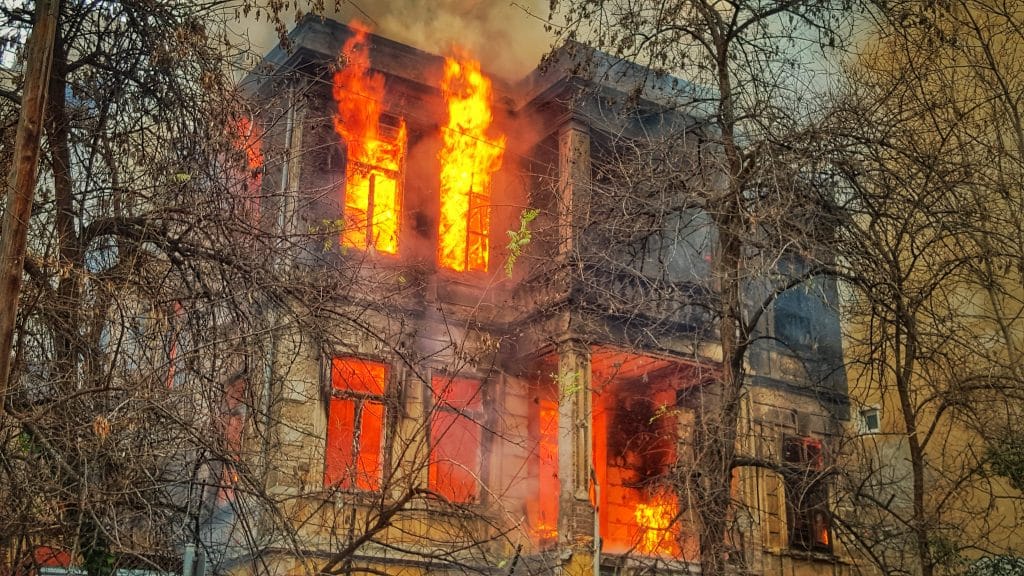Fire safety in care homes is extremely important as these environments involve some of society’s most vulnerable people; some who may have health conditions which makes things like evacuations much more different.
That’s why it’s imperative to have the right regulations in place when it comes to fire safety.
Fire risks in care homes
The risk of fire is present pretty much everywhere, but care homes carry their own unique risks. Government statistics show that there are, on average, 388 UK care homes every year.
And according to London Fire Brigade, the most common fire risks in care homes are:
Smoking – smoking materials being disposed of carelessly and smoking not being controlled or monitored.
Electrical equipment – electrical items being placed too close to flammable materials.
Spread of fire – doors being wedged open giving the potential for fire spread throughout the building.
But there are other risks that should be considered too. For example, many residents of care homes require oxygen tasks which can make a fire explosive and deadly. Similarly, emollients and skin creams are an added fire safety concern within care home environments, especially when used by people who spend extended periods in a bed or armchair due to illness or impaired mobility.
There is also an added risk that a fire may occur in the middle of night making evacuation that much slower and more difficult, especially if fewer people are on staff compared to during the day.
Mobility scooters are commonplace in care homes and the NFCC has provided specific fire safety guidance in relation to them:
“Mobility scooters involved in a fire can release large volumes of smoke and generate significant heat outputs. If mobility scooters are stored on escape routes and are involved in a fire, there is a potential that escape routes will become impassable and residents could be placed at significant risk in the event of a fire.”
Legislation for fire safety in care homes
Commercial fire safety is regulated by the Regulatory Reform (Fire Safety) Order 2005. The Order places responsibilities on anyone with an involvement in fire safety in care homes such as registered managers, risk assessors and fire alarm technicians. However, the primary duties lie with the care provider as the employer and therefore “Responsible Person.”
Care homes present unique challenges and the consequences of getting fire safety wrong can be fatal. Additionally, fire safety failings may result in a care home being rated “inadequate” by the Care Quality Commission (CQC) and may even result in personal prosecution.
The Care Home Regulations Act (2001)
The Care Home Regulations Act of 2001 sets out fire safety regulations for care homes, including how care homes should approach fire safety and how complaints about fire safety in a care home are handled. This Act was amended in 2003.
Care home manager and care home facility owners need to look at several key responsibilities they have towards care home residents under the Act, including:
Consulting fire authorities for advice on the best fire safety strategy for their care facility
Ensuring all the necessary precautions are in place to reduce the risk of a fire
To put policies in place that allow for quick fire detection, containment and extinguishment
Ensuring that fire safety equipment is regularly checked and maintained
Appointing a properly trained fire marshall for the care home
Ensuring that all staff are trained on how to react in the event of a fire
Organising regular fire drills and evacuation practice
Keeping an up to date fire safety log, with details of all training, emergency evacuation practices and incidents in the home
The importance of fire risk assessments in care homes
All this to say, it’s clear that fire risk assessments are absolutely vital in care home settings. They should be done frequently and thoroughly to ensure they are kept up to date. Your care home fire risk assessments should involve:
Identifying all possible fire hazards.
Identifying people on the premises who may be at risk.
Reducing and/or removing those risks.
Recording your findings, prepare your emergency procedures accordingly and provide fire safety training.
Reviewing and updating this assessment regularly.
For help with your care home fire risk assessments, contact us at Martyn Young Fire Proofing. We can make sure your care home fire risk assessment is accurate, thorough and completely bespoke to your particular care home and its residents.
The post A guide to fire safety in care homes appeared first on Total Fire Group.


